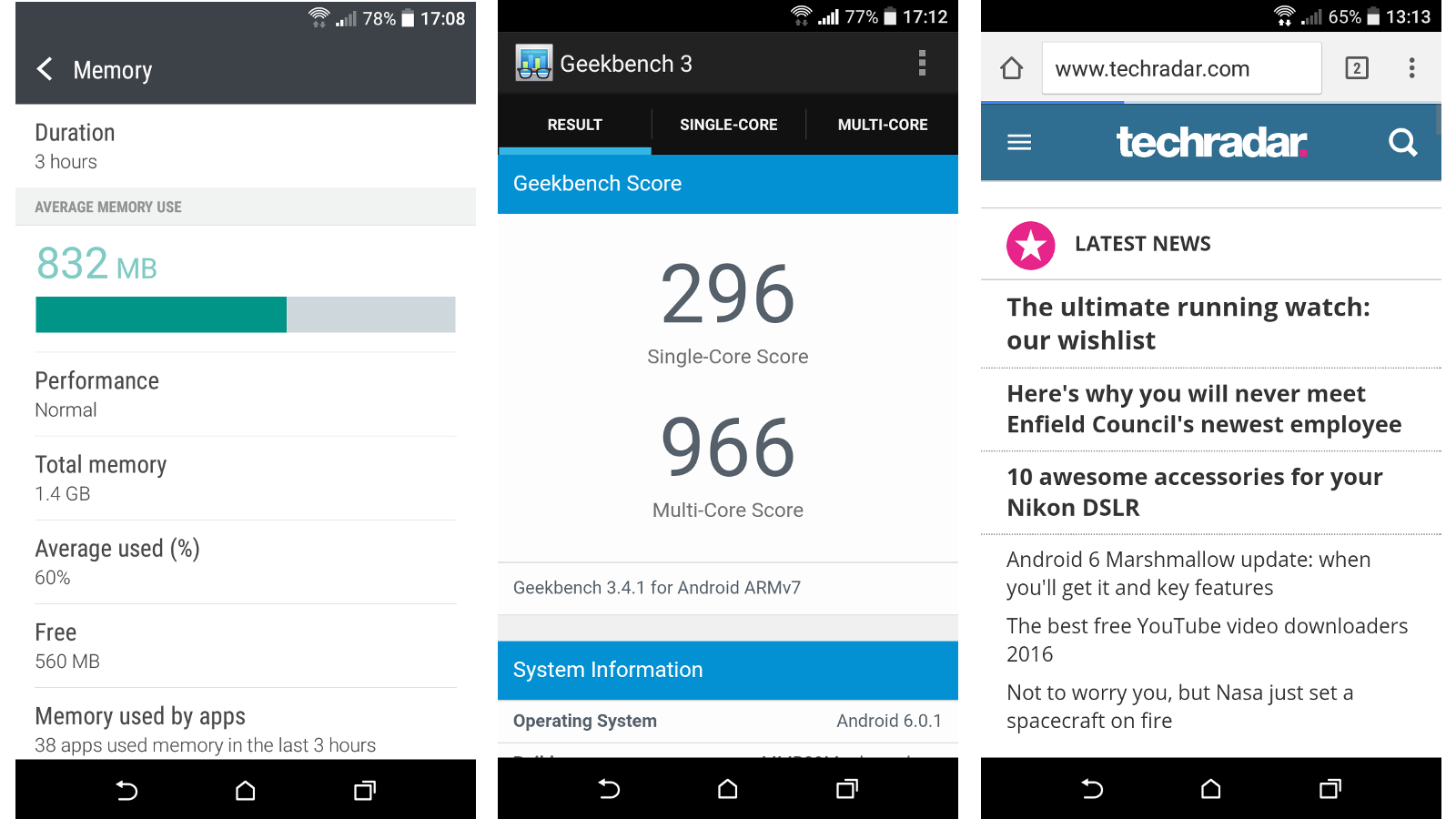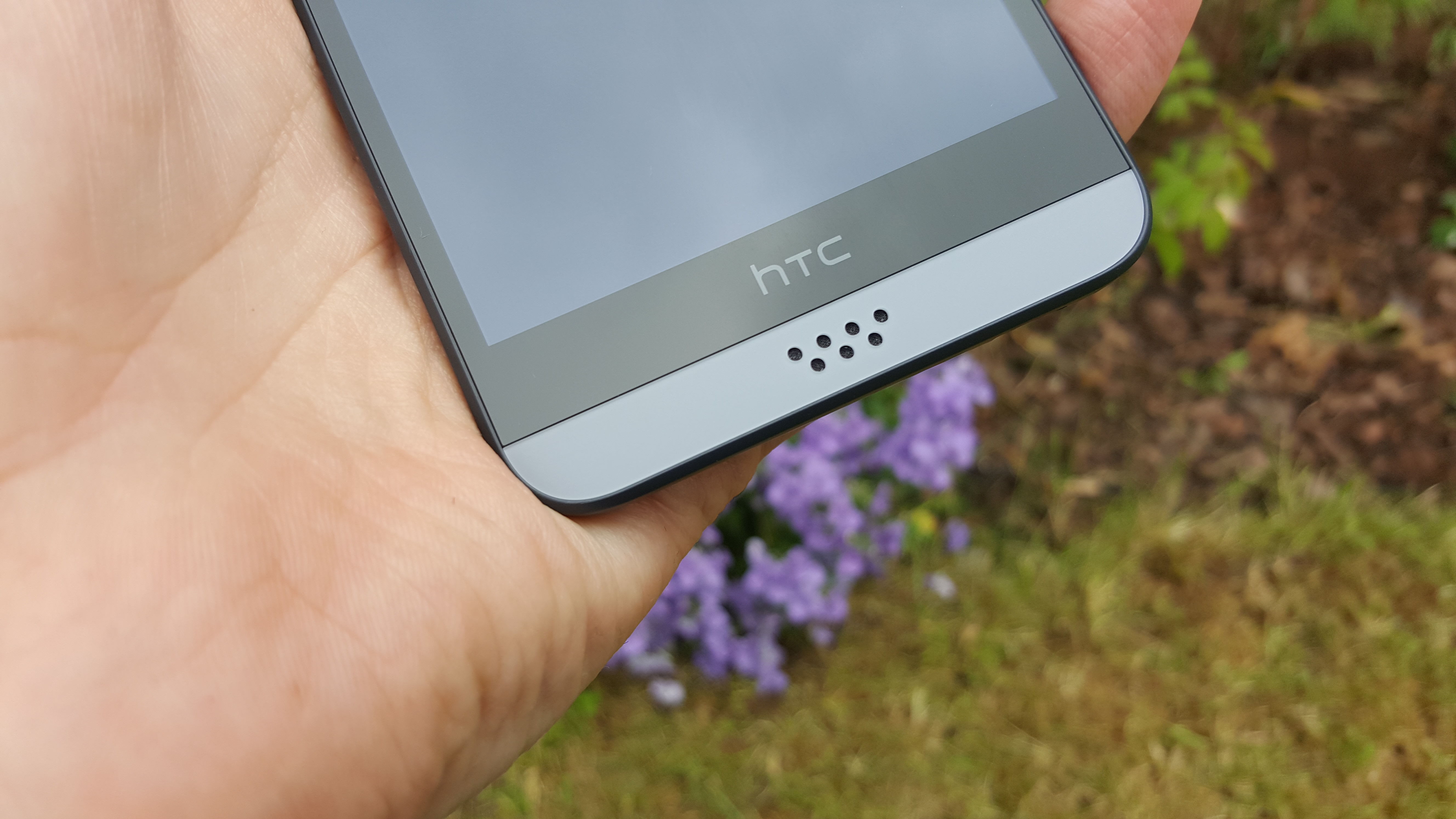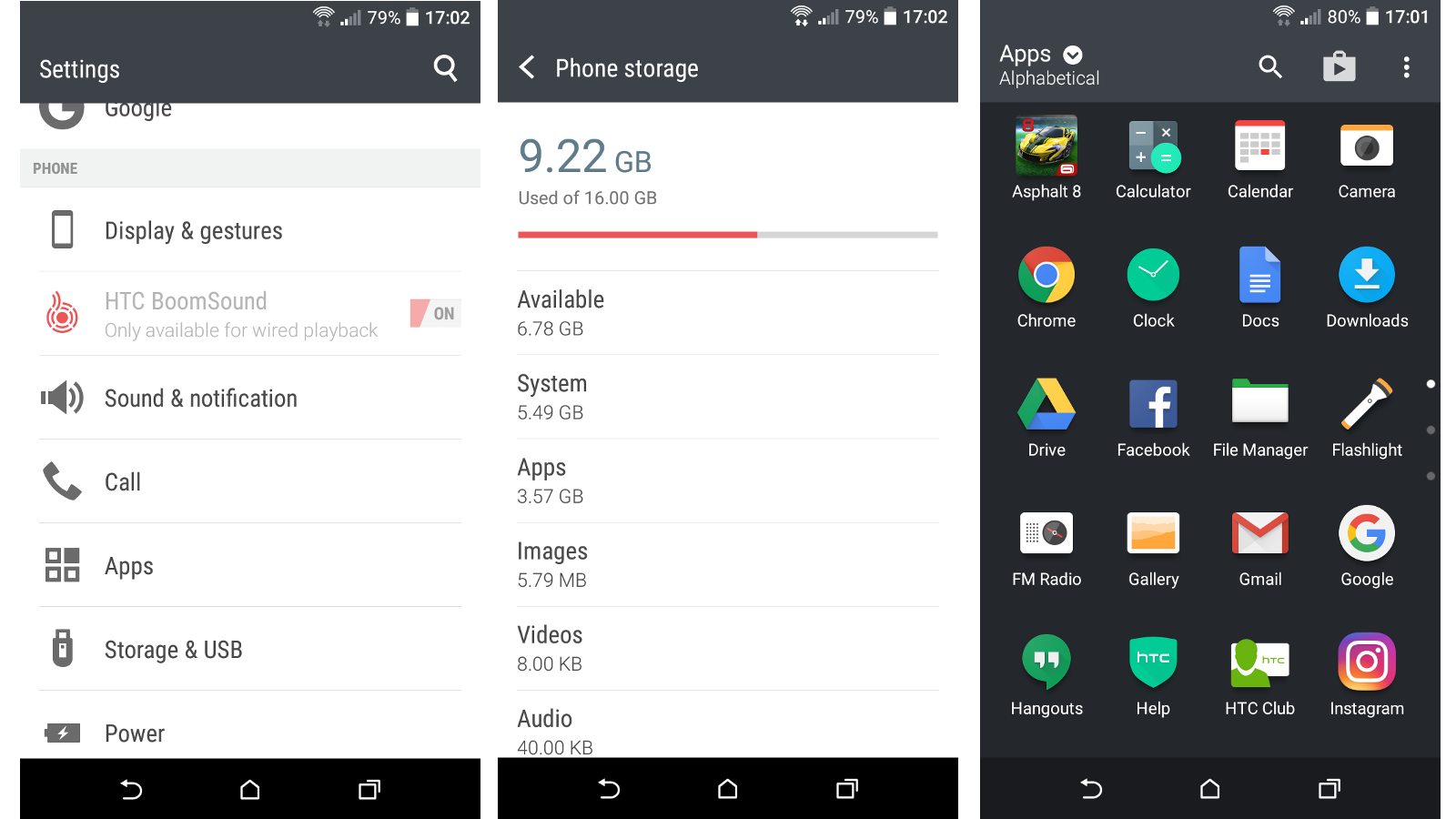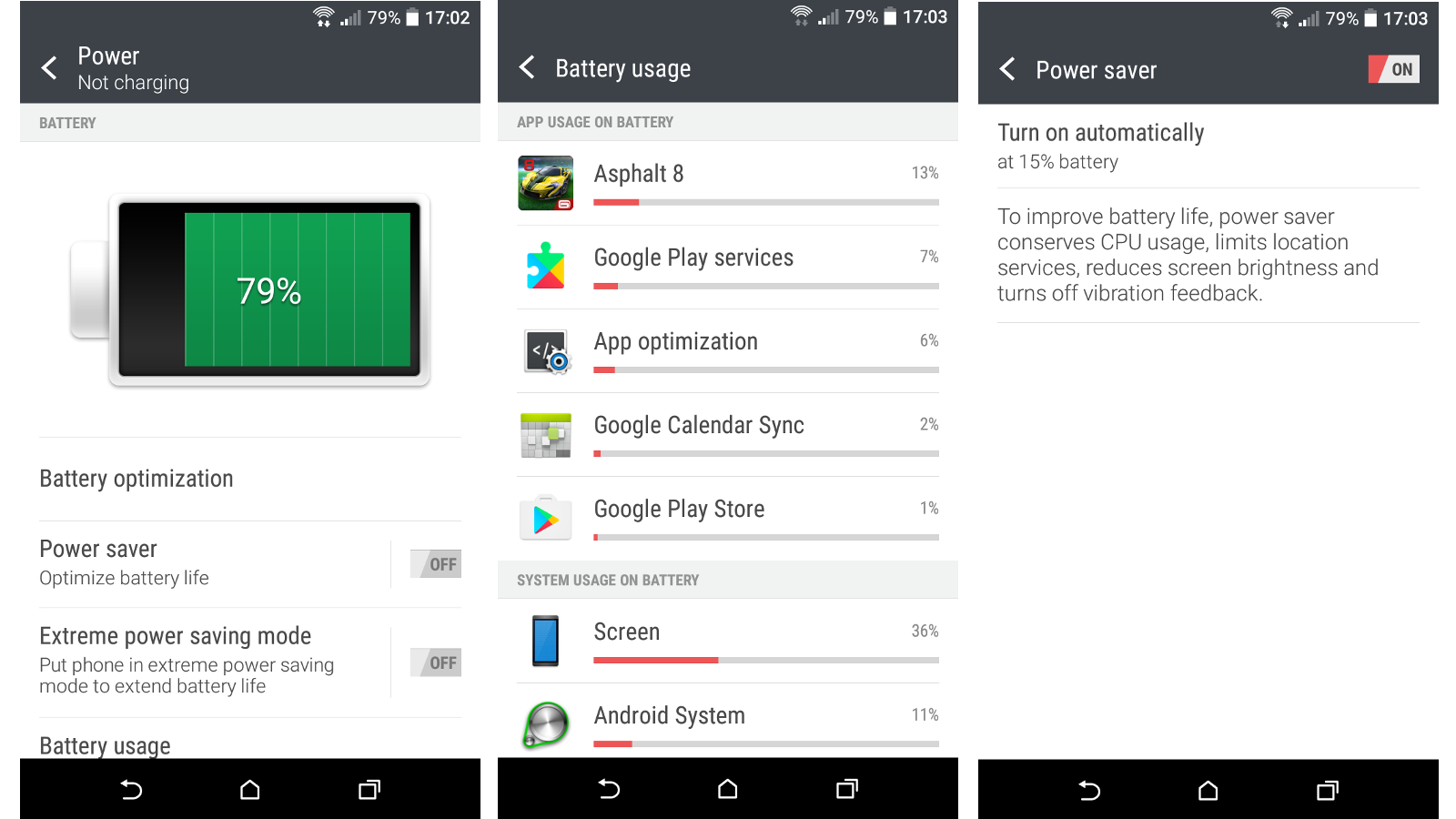Why you can trust TechRadar
The HTC Desire 530 has a quad-core Qualcomm Snapdragon 210 CPU clocked at 1.1GHz. It's paired with an Adreno 304 GPU and backed up by just 1.5GB of RAM. That's about as miserly as HTC could get, and it shows.
When you tap the recent apps button you have to wait a beat for the list to load. Tap the camera and it's ready to take a shot a couple of seconds later. Sometimes, when you hit the home button, it'll take a second or so to get there, and even then the clock and weather widget won't have loaded.
It's been quite some time since I had to use a phone as slow as the HTC Desire 530. I would not wish performance like this on my worst enemy.

Running benchmarks in Geekbench 3 confirmed the woeful performance, with a single-core score of 296 and a multi-core score of 966 – I ran the latter test twice more and it managed 992 and 987, for an average of 981.
That is awful. The Moto E averaged 1421 in the same test, and it costs £20 less than the Desire 530. The Wileyfox Swift scored 1330. Even 2014's EE Kestrel managed 1190.
In everyday use the HTC Desire 530 is irritatingly slow at every turn. Loading up the browser or tapping a link takes a beat longer than it should. Games take an age to load. You can play something like Asphalt 8 on this phone, but it won't go beyond medium graphical quality, and it's choppy at times.
It also turns out that, despite there being two speaker grilles, only the bottom one works with media. It's not very loud, and it sounds pretty tinny when you crank it up. Boomsound is reserved as a profile for headphones; none are provided in the box.

I found that video streaming through YouTube or Netflix worked fine, but the need to maintain the perfect angle for the display, and the poor quality of the sound, sucked the fun out of watching a movie on the Desire 530.
The Desire 530 also has only 16GB of internal storage, with 9.8GB available out of the box, although you can upgrade this by up to another 128GB via microSD.

The fact that the HTC Desire 530 is so slow means it's inevitably going to annoy you. It also doesn't help that taps are accompanied by a slow vibration, which sounds like an old man wheezing; it kind of adds to the sense that this phone is struggling.
Update: After this review, HTC informed us that the first Desire 530 handset we reviewed was actually only running pre-production software, so they sent us a fresh one. We took the new software for a spin and found it every bit as slow as the original. The browser, the camera, and everything else still took a beat longer than it should to load.
We ran Geekbench 3 on the updated Desire 530. It also scored a single core score of 296, but the multi core score second time around was 944. We ran it twice more to be thorough and it scored 955 and 963, for an average of 954.
Once you've opened an app for the first time and it's loaded in memory, it is significantly quicker to reload it, so if you only ever use a handful of apps it won't feel quite as slow all the time. But when an app drops out of memory again, it's straight back to taking far too long to open.
Battery life
The HTC Desire 530 has a 2,200mAh battery, which should be plenty of power to see it through a normal day, partly because it's only powering a 720p screen.
I found that it managed a full day easily without needing a charge, but that's partly because I didn't want to use it – more than once the sluggish performance prompted me to give up and do something else instead.

I found that the phone handled web browsing, messaging, and calls without any problems battery-wise, but gaming chewed through the battery pretty quickly. Playing Asphalt 8, it dropped by around 5% every 10 minutes.
Running our 90-minute HD video test at full brightness, with Wi-Fi on in the background, the HTC Desire lost 24% of its battery. By comparison, the Moto E shed 22% in the same test.
